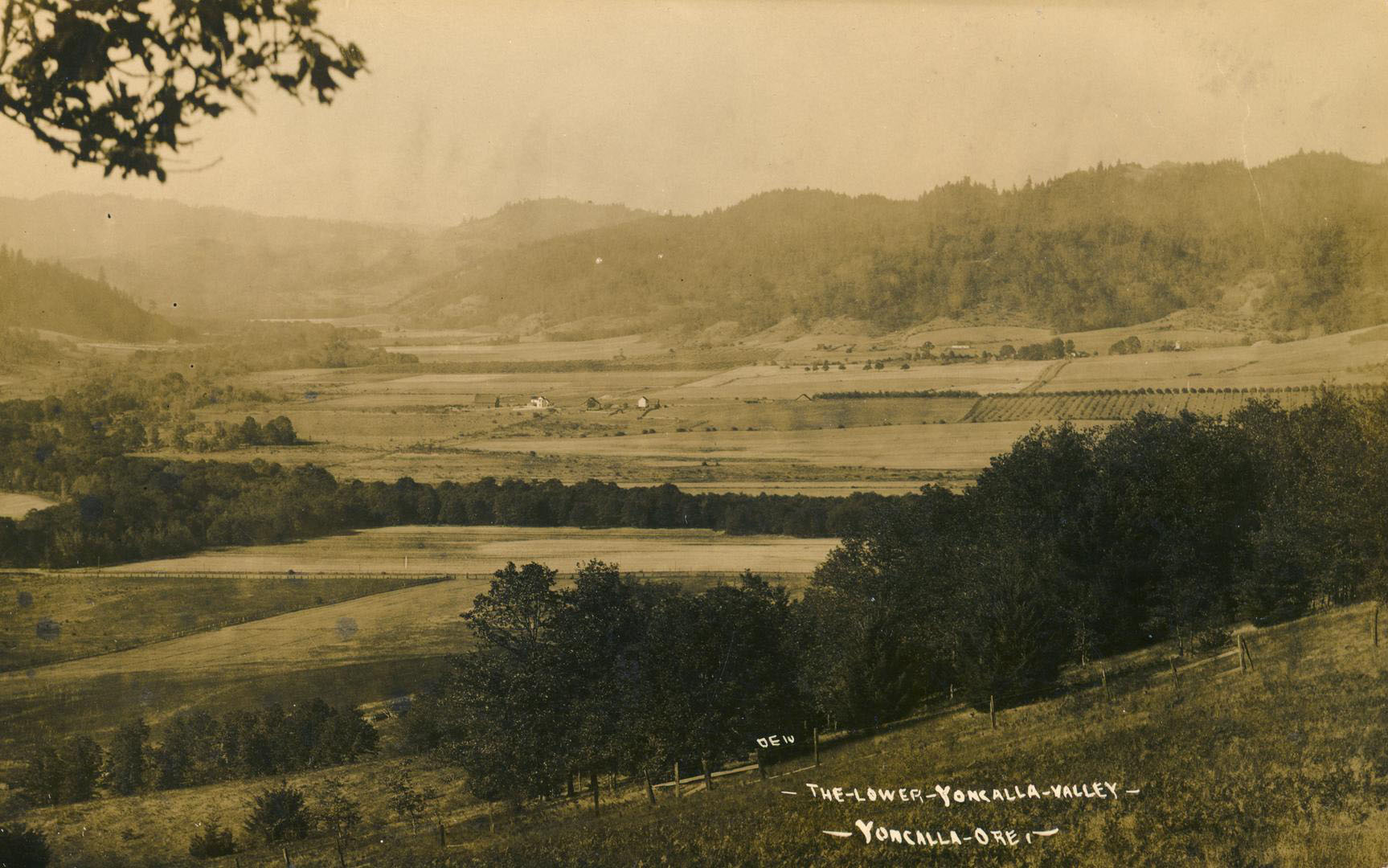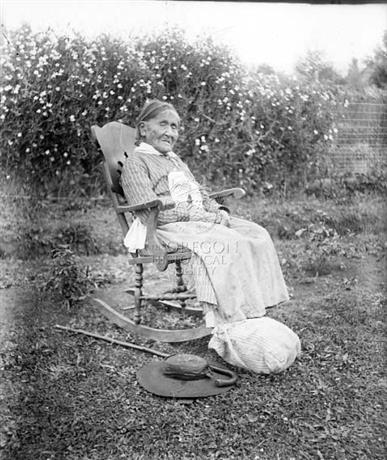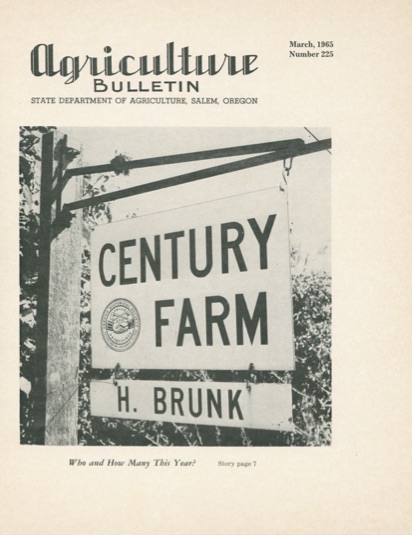The modest peaks of the Calapooya Mountains rise south of the Willamette Valley. Named for the Kalapuya Indians who lived there, the mountains straddle the ancient trail that connected western Oregon with the valleys of the Sacramento and San Joaquin Rivers to the south. Early Euro-American emigrants were attracted to the valley, including three brothers from Kentucky, Charles, Lindsay, and Jesse Applegate, who came to Oregon in 1843 and settled near Dallas in Polk County. Jesse and Lindsay Applegate were among the settlers who blazed what would become the Applegate Trail in 1846, a southern route through the Siskiyou Mountains into California and Nevada to join the California Trail.
All three brothers, with their families, took up adjoining Donation Land Claims in the shadow of Mount Yoncalla in the Calapooya Mountains. The eldest, Charles (1806–1879), with his wife Melinda (1812–1888), settled just east of the future town of Yoncalla. There they built a small cabin in 1850–1851 to house their thirteen children (three more joined the family later) while they built a much larger two-story house, completed in 1856. That house still stands and is still owned by members of the Applegate family. The farm was along the route of the Oregon–California Trail, but it was remote from towns, and imported supplies such as coffee and sugar that arrived through San Francisco, then by ship to Scottsburg on the Umpqua River, and finally by pack train to the Yoncalla area.
In 1865, Charles Applegate purchased property several miles from Yoncalla on Elk Creek in Scotts Valley from his neighbor, John Scott (the son of Levi Scott, who helped blaze the Applegate Trail). He deeded the land to his sons, John (1842–1912) and Albert (1843–1888), who were in their early twenties. The brothers raised wheat and built a mill on Adams Creek where they prepared flour and grist, grew corn and potatoes, and raised sheep, cattle, hogs, and horses.
Albert Applegate married Nancy Johnson in 1869, and the couple had seven children. In time, each child received an equal portion of his farmland. One of those children, J. Grant (1873–1958), worked as a railroad engineer for the Southern Pacific Company until he returned to the farm in 1910. His marriage to Myrtle Stough resulted in a son, Frederick (1917–1989), who worked as a timber faller while his family tended the property, which produced sheep, cattle, wheat, oats, hay, and for a time, turkeys.
The farm was deeded to Frederick Applegate in 1955. He added eighty acres of timber and grazing land, raised sheep and cattle, and grew hay. The property was designated a Century Farm in 1965, one hundred years after Charles Applegate bought the land from John Scott. The honor was accepted by Frederick and Jane Applegate. Their daughters, Marie and Susan Applegate, came into the property in 1974 and 1980. They continue to devote part of the ranch to livestock while working to return much of it to native vegetation and wildlife.
-
![]()
Lower Yoncalla Valley, 1907.
Oregon Explorer, Oregon State University. Oregon Digital
Related Entries
-
![Applegate House]()
Applegate House
The Charles and Melinda Applegate House in Yoncalla is the oldest known…
-
![Applegate Trail]()
Applegate Trail
The Applegate Trail, first laid out and used in 1846, was a southern al…
-
Jesse Applegate (1811-1888)
Jesse Applegate, an influential early Oregon settler, is most remembere…
-
![Kalapuyan peoples]()
Kalapuyan peoples
The name Kalapuya (kǎlə poo´ yu), also appearing in the modern geograph…
-
![Oregon Century Farm & Ranch Program]()
Oregon Century Farm & Ranch Program
The Oregon Century Farm & Ranch Program was founded in 1958 to recogniz…
Related Historical Records
Map This on the Oregon History WayFinder
The Oregon History Wayfinder is an interactive map that identifies significant places, people, and events in Oregon history.
Further Reading
Charles Applegate Farm. Oregon Century Farm and Ranch Application. Oregon Century Farm and Ranch Program, Oregon State University. "CFR0122" Oregon Digital.






